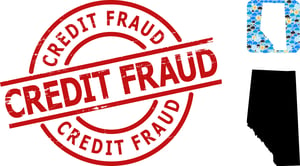Can I Keep My Boat if I File for Bankruptcy in Saint Paul, Minnesota?
Boating could very well be considered the quintessential Minnesota pastime! With 10,000 lakes (well, 11,842 lakes to be exact) it’s no wonder Minnesotans love to go boating. For many Minnesotans, their boat is one of their most valuable pieces of property that they own. So, it is no surprise that many Minnesotans who are considering filing for bankruptcy wonder if they will be able to keep their boat after their case is filed.
Whether they can keep their boat depends upon the value of the boat, how much of a secured loan they have against the boat, and whether they file a chapter 7 or chapter 13 bankruptcy case.
In a chapter 7 case, the debtor (the legal term for a person who files a bankruptcy case) has their debts discharged in three to four months from the time their case is filed without the need to make any payments towards their debts. However, while in most chapter 7 cases, the debtor is able to keep most, if not all, of their property, in some case the debtor may have to turn over certain nonessential property to the trustee to pay their creditors. While bankruptcy law protects a debtor’s basic essential property, such as their house, a modest vehicle, clothing, and household furniture, nonessential property, like boats, are not specifically “exempt,” or legally protected from being able to being taken by the trustee to pay creditors. If there is a secured debt against the boat (there is a lien on the boat to secure repayment of the loan), there may not be enough equity for the chapter 7 trustee to be able to take the boat.
The chapter 7 trustee’s job is to take the debtor’s “nonexempt” property to pay the debtor’s unsecured debts, such as credit cards, medical bills, and personal unsecured loans. If the amount of the secured loan against the boat is greater than the value of the boat, there is no equity in the boat and the trustee will not be able to take the boat at the expense of the secured creditor to pay the debtor’s unsecured creditors. If the balance of the boat loan (if any) is less than the value of the boat, there is equity in the boat and the trustee may be able to take the boat in some circumstances.
Minnesotans have the option of choosing Federal or State “exemptions” (laws that protect their property from creditors) to protect their property in their bankruptcy case. If the debtor has little, or no, equity in the home they own (or, if they don’t own a home), they will probably use “Federal exemptions” to protect their property from creditors. If they have a larger amount of equity the home they own, they will likely need to use Minnesota State exemptions to protect their property, particularly their home. A boat owning debtor who files under the Federal bankruptcy exemptions, is afforded a special “wildcard” exemption that can be used to protect any property they choose up to about $15,000, including nonessential property not specifically exempted under other laws. For this reason, debtors in Minnesota who own a boat and file for chapter 7 bankruptcy under the Federal exemptions can usually use the wildcard exemption to protect, and keep, their boat in bankruptcy. There is no such wildcard exemption under State exemptions. Therefore, a boat-owning debtor who uses State exemptions, and has equity in their boat, may not protect their boat from being taken to satisfy their debts. In such cases, the debtor must either surrender their boat to the trustee to be sold at an auction to pay creditors, or pay an agreed amount to the trustee to be able to keep it.
In a chapter 13 case, the debtor makes payments to a trustee in a three to five year repayment plan, after which the debtor receives a discharge of their remaining debts. A debtor does not have to give up any property to the trustee but must pay, at least, as much to their unsecured creditors as the creditors would have hypothetically received had they filed a chapter 7 case. Therefore, Minnesotans who file a chapter 13 case, and who have equity in their boat, will be able to keep their boat so long as their unsecured creditors receive as much as they would have received had they filed a chapter 7, which is essentially the amount of equity in their boat that they would not have been able to exempt, and protect, had they filed a chapter 7 case. This, of course, depends on whether the debtor uses Federal or State exemptions, as described above. Even if the debtor in a chapter 13 case is able to afford paying the nonexempt portion of the equity of the boat in their chapter 13 plan, they face another potential problem if there is a secured loan against the boat. Chapter 13 debtors are required to pay as much as they can afford, each month, to their creditors after paying their necessary monthly expenses. Boats, unlike cars or homes, are considered a “luxury” item and boat loans, therefore, are considered an unnecessary luxury expense. For this reason, it is obvious why the chapter 13 bankruptcy trustee is reluctant to allow the debtor to continue paying hundreds of dollars per month to keep a boat they do not need, which leaves less money for the debtor’s other unsecured creditors. In such cases, in order for their case to be confirmed by the court, the debtor typically must agree to surrender the boat back to the boat loan lender, unless someone else agrees to make the boat payment for the debtor, or the debtor’s plan provides for full payment to all of their unsecured creditors.
CALL NOW FOR A FREE STRATEGY SESSION FROM A MN BANKRUPTCY LAWYER AT LIFEBACK LAW FIRM
Whether a Minnesotan will be able to keep their boat after filing for bankruptcy depends on a number of factors and can be complicated. When considering filing for bankruptcy, a person is well-advised to first consult with an experienced bankruptcy attorney. LifeBack Law Firm now has a new office located at 370 Selby Ave., Suite 224, Saint Paul, MN 55102. Come visit us there, or online, at lifebacklaw.com!







